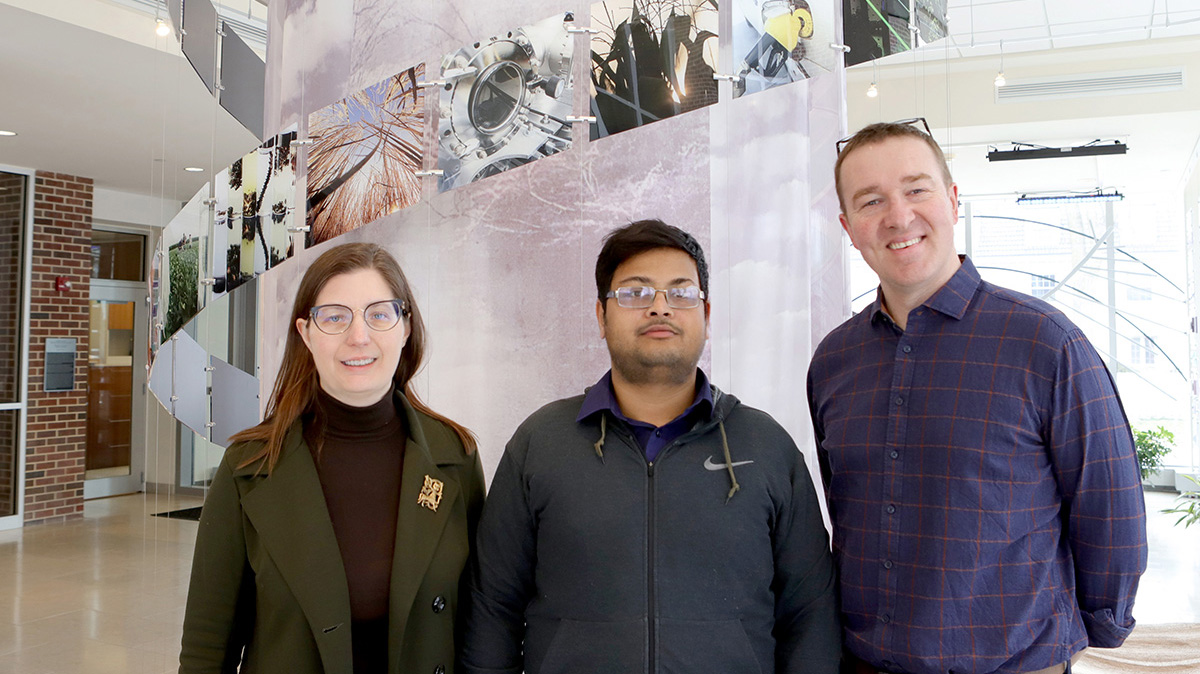New grant to study Ehlers-Danlos syndrome

From left: Christina Laukaitis; Mainak Sarkar, a postdoctoral researcher in the Laukaitis group; and Brendan Harley. / Isaac Mitchell
Researchers at the University of Illinois Urbana-Champaign have recently received a three-year commitment of $250,000 for examining Ehlers-Danlos syndrome. The labs of Christina Laukaitis (RBTE/EIRH), a clinical associate professor at the Carle Illinois College of Medicine, and Brendan Harley (RBTE/EIRH), a Robert W. Schaefer Professor of chemical and biomolecular engineering, will use the donation to support research efforts and plan for workshops.
Ehlers-Danlos syndrome is a set of inherited disorders that affect connective tissues, especially in the skin, joints, and the walls of blood vessels. Consequently, patients with this syndrome usually have overly flexible joints and fragile skin that doesn’t heal properly. Unfortunately, very little is known about how the disease progresses.
“Hypermobile EDS is the most common type and it overwhelmingly affects women. However, it is not understood. There are no biomarkers that can help detect it and there is no treatment,” Laukaitis said. “This project is exciting because we will be able to provide objective data about this understudied but significant disease, using the tools here at the University of Illinois.”
Previously, researchers in the Laukaitis group have isolated tissue specimens from patients and have sequenced them to understand the molecular underpinnings of EDS. They are now interested in collaborating with the Harley group to create models that can look at how EDS tissues behave.
When the donors, Charles Bell, an alum of the Department of Chemical Engineering, and his wife Catherine Bracken, learned about this collaborative research project, they were interested in helping the effort. “Our daughter, Barbara, along with thousands of others, suffers from the many physiological conditions associated with hypermobile EDS. We were excited to learn about the work at Illinois in both research and clinical settings and hope it will lead to earlier identification of and, eventually, therapies to manage this debilitating condition,” Bell said.
Together with Harley and Laukaitis, they decided that it would be valuable to put together workshops that can bring in experts who can help with understanding EDS. “These projects usually require large teams that work collaboratively. Through these workshops we want to figure out the scale of our future research projects that will include genomics, functional outputs and imaging tissue models,” Harley said.
“We have an amazing strength in engineering at Illinois and that is desperately needed in the EDS field,” Laukaitis said. “This donation will help bring us together and overcome the current paucity of objective data.”

